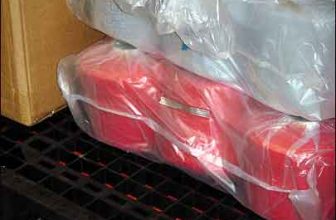
The chemical industry uses RFID to track production tools to reduce costs
[ad_1]
Evonik (formerly known as DEGUSSA) is one of the world’s leading suppliers of high-quality additives and pharmaceutical raw materials. These pharmaceuticals have a variety of uses in skin and hair care.
The production process of these additives is very complicated, and different liquids are compressed through more than one thousand filter plates. Each filter plate is worth about 1500 Euros. Production is uninterrupted for 24 hours. During the production process, some filter plates are often damaged, so that the entire compression process has to be interrupted. At this time, time is money, and the damaged filter plate must be replaced as soon as possible.To replace, the problem is the lack of data. The lack of data affects the quality management and cannot make guarantee requirements for the filter plate supplier, which leads to human errors, mechanical failures or process failures, which greatly increases production costs.
Therefore, it is necessary to find a solution that is easy to manage, efficient, and accurate in data display in order to find the person in charge and save costs.
After Evonik successfully found a suitable logistics solution partner, it appointed PANMOBIL (formerly ADT), a German automatic identification expert, to complete this task.
Due to the harsh environment and various chemical liquids, it is impossible to affix RFID tags to the filter plate or fix it with screws. The experts at PANMOBIL decided to implant round RFID pellets into the plastic filter plate material. When implementing an RFID solution, there are two parts to consider, one is the cost of the RFID tag, and the other is the installation that is often forgotten. The experts chose the simplest and most practical assembly method: drill a hole in the filter plate, then insert the RFID pellet, and finally seal the hole with a silicon material. In this way, the RFID sensor will not be mechanically damaged or chemically corroded.
work process
Using PANMOBIL’s SCANNDY tag reader, only one or two workers without any special skills need to go through all the filter plates and press the scan button to collect the data. There are about 100 filter plates in each compression process, and there is an RFID tag on both sides of the filter plate. Scanning a tag during the compression process from the beginning to the end, all the data in this process is collected. After all the data is collected, the reader is placed on the charging communication rack, and the data is downloaded to the filter plate database.
The real cost savings is to find out the weak link statistics
PANMOBIL also uses a very convenient and useful statistical software, so that Evonik can see the field data of all filter plates installed.
Through this powerful database, you can discover which filter plate supplier is good and which supplier is not good, and ensure that the filter plate meets the requirements. In addition, the quality of the compression mechanism can be checked, and various maintenance quality statistics can be provided. (Text/Jiang Bingkui)
[ad_2]




